

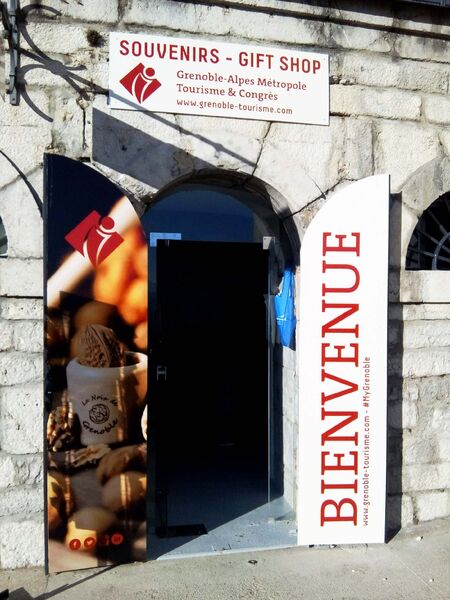
Period of opening : From 01/04 to 08/04/2022
Opening hours on Wednesday, Saturday and Sunday between 11.30 am and 1.30 pm and between 2 pm and 6 pm.
From 09/04 to 15/04/2022
Opening hours on Tuesday, Wednesday, Thursday, Friday, Saturday and Sunday between 11.30 am and 1.30 pm and between 2 pm and 6 pm.
From 16/04 to 01/05/2022
Opening hours daily between 11.30 am and 1.30 pm and between 2 pm and 6 pm.
From 02/05 to 08/05/2022
Opening hours on Tuesday, Wednesday, Thursday, Friday, Saturday and Sunday between 11.30 am and 1.30 pm and between 2 pm and 6 pm.
From 09/05 to 06/07/2022
Opening hours on Wednesday, Saturday and Sunday between 11.30 am and 1.30 pm and between 2 pm and 6 pm.
From 07/07 to 31/08/2022
Opening hours daily between 11.30 am and 1.30 pm and between 2 pm and 6 pm.
From 01/09 to 30/09/2022
Opening hours on Wednesday, Saturday and Sunday between 11.30 am and 1.30 pm and between 2 pm and 6 pm.
From 01/10 to 21/10/2022
Opening hours daily between 11.30 am and 1.30 pm and between 2 pm and 5 pm.
From 22/10 to 06/11/2022
Opening hours daily between 11.30 am and 1.30 pm and between 2 pm and 5 pm.
From 07/11 to 16/12/2022
Opening hours on Wednesday, Saturday and Sunday between 11.30 am and 1.30 pm and between 2 pm and 5 pm.
From 17/12/2022 to 01/01/2023
Opening hours daily between 11.30 am and 1.30 pm and between 2 pm and 5 pm.
Closed exceptionally on bank holidays.
From 04/02 to 20/02/2023
Opening hours daily between 11.30 am and 1.30 pm and between 2 pm and 5 pm.

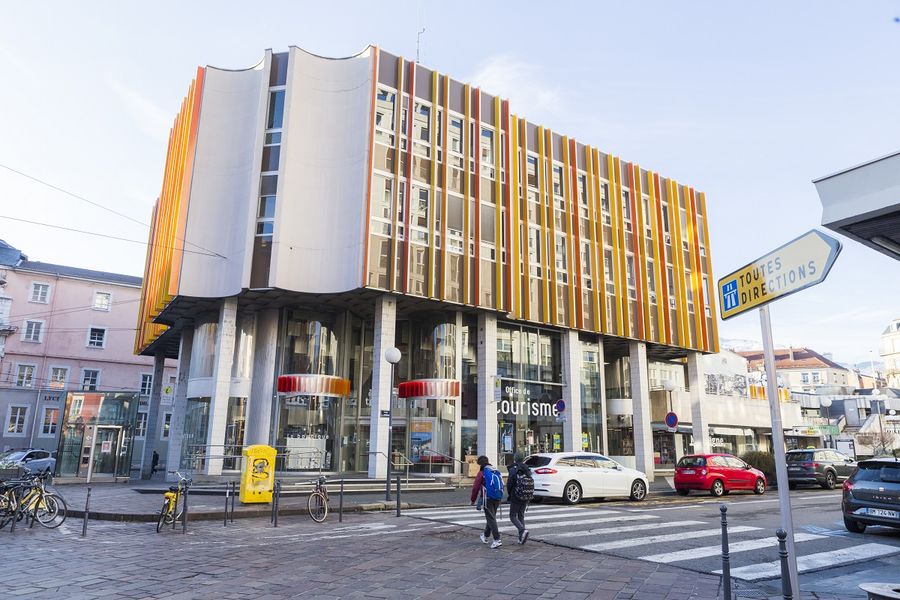
Period of opening : From 01/09/2021 to 30/06/2022
Opening hours on Monday between 1 pm and 6 pm. On Tuesday, Wednesday, Thursday and Friday between 10 am and 6 pm. On Saturday between 10 am and 1 pm and between 2 pm and 6 pm.
Closed exceptionally on January 1st, May 1st and December 25th.


Medical sciences museum of Grenoble was created in 1992 thanks to the initiative of several hospital decision makers concerned about preserving the history of their institution.The preservantion of the hospital's heritage, undertaken by many hospital workers long before the creation of the association, is a field in which the CHU of Grenoble invests itself fully, thus opening its doors in partly to the cultural sphere. A building filled with history was made available to the Grenoble Museum of Medical Science at the northern hospital--the old chapel of Tuberculosis victims, also called the Chapel of the Asylum for the Aged, named for the ensemble of pavillons in which it is located. Today, the geographic situation and the theme of the museum make it an unusual site at the heart of the hospital where ideas can come together and debates can take place. One of the hospital's objectives and one of the museum's missions is to showcase the hospitals rich collection, but also to change mentalities and do away with preconceived notions, making the hospital a place just like any other. Basically, it's all about showing what the hospital once was, what it is today, at the same time much like other hospitals and specific thanks to its location in Grenoble.Period of opening : From 09/01 to 30/09, every Tuesday between 12.30 pm and 5 pm.Prices : Free museum
Access : Tramway B stop Michallon

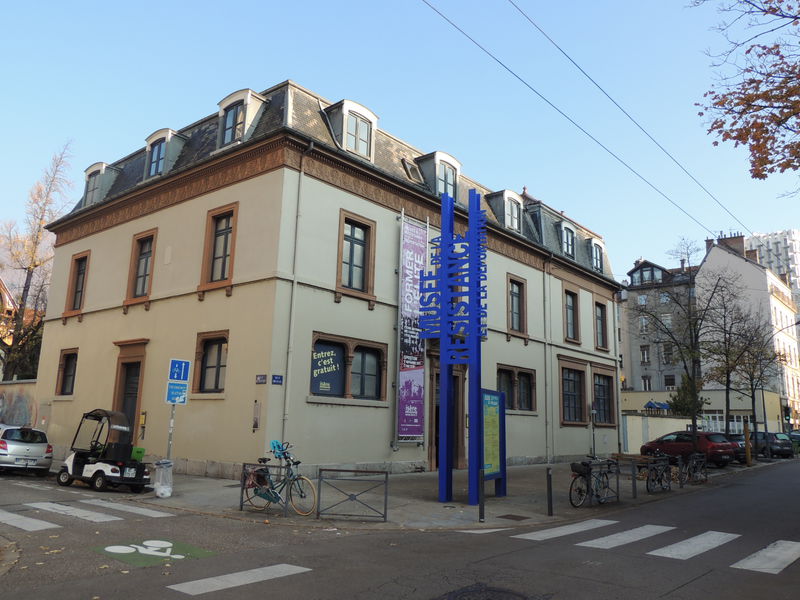
The Resistance and Deportation Museum is designed to be a true history museum.
The Resistance and deportation are approached through local history, the people, and the episodes that took place.The Resistance and Deportation Museum is designed to be a true history museum, even if it also serves as a memorial site. The Resistance and deportation are approached through local history, the people, and the episodes that took place.
Six main themes are developed inside the museum:
-The beginning of the Resistance, a pivotal moment for Grenoble. Few French cities saw resistance movements grow in as many groups and situations as Grenoble did.
-The resistance fighters and their preponderant position in the Isere department, from 1943 on. They all communicated via Grenoble, which was thus baptized “capital of the resistance fighters.”
-The situation of Grenoble’s and Isere’s Jewish population, from the 1930s to the time of the German occupation.
-The violent repression that struck the directors of the main resistant movements, especially at the end of 1943, during what is called the “Grenoble Saint Barthelemy,” and the deportation which revealed the monstrosity of Nazi logic.
-The Liberation and the role of the Departmental Committee of National Liberation, born out of the “Monaco” meeting, where the representatives of the Resistance decided to rally their actions around the values of the French Republic.
-Current resistance movements, because today, the Nazi ideology has yet to completely disappear and many countries suffer from totalitarian or terrorist regimes.
The visit, which follows the chronology of events, is divided between the museum’s three levels.
- On the first floor: a first sequence, dedicated to the outbreak and events of the world conflict as they were lived in Grenoble and Isere. An important event from this period: Marshall Pétain’s visit to Grenoble on March 19, 1941. An amateur video from the event recounts the important moments.
- On the second floor: The visitor is transported through several different, separated areas where the idea of the Resistance was born. Six different places are recreated. The visitor first crosses through a Grenoble street, scene of student and other youth protests, the dining room of Marie Reynoard, head of the Isere chapter of “Combat,” the office of René Gosse, head of the Grenoble college of sciences and member of the “Marco Polo” network, etc.
The visit continues with a presentation of the Isere resistant fighters, a relief map where the maquis, sabotages, and parachuting sites light up at the push of a button.
- On the third floor, the chronology continues with the presentation of the tragic events that defined the German occupation: collaboration, sabotage, repression, and deportation. One of the highlights of the visit: three doors from prison cells built by the Gestapo in the building located at 28 cours Berriat, Grenoble, marked with inscriptions from those held captive. The visit ends with the Liberation and the restoration of the values of the French Republic. Another area deals with today’s Resistance values, for which many people continue to fight.
Over thirty years of acquisitions and donations, more than 5,000 objects and documents make up the museum’s collection. The collection is precious not only because of its age, but also by the breadth and quality of the documents: more than 80 posters, original drawings, numerous photos, printed documents (tracts, reports, brochures), copies of regional newspapers (with some complete collections, such as with “les Allobroges”), and of course objects (transmission and sabotage material, everyday objects from life during the Occupation, etc.).
This collection was completed with audio archives starting in 1990, made up of interviews from hundred of Resistance and deportation veterans. Carefully inventoried as part of digital cataloguing, these collections were declared to be of public interest on June 17, 1993 by the Artistic Council of Directors of the Museums of France. This recognition bestows upon the Isere Resistance and Deportation Museum the status of “inspected museum,” and also that of “Museum of France.”Period of opening : All year round
Opening hours on Monday, Wednesday, Thursday and Friday between 9 am and 6 pm. On Tuesday between 1.30 pm and 6 pm. On Saturday and Sunday between 10 am and 6 pm.
Closed exceptionally on January 1st, May 1st and December 25th.Prices : Free of charge.

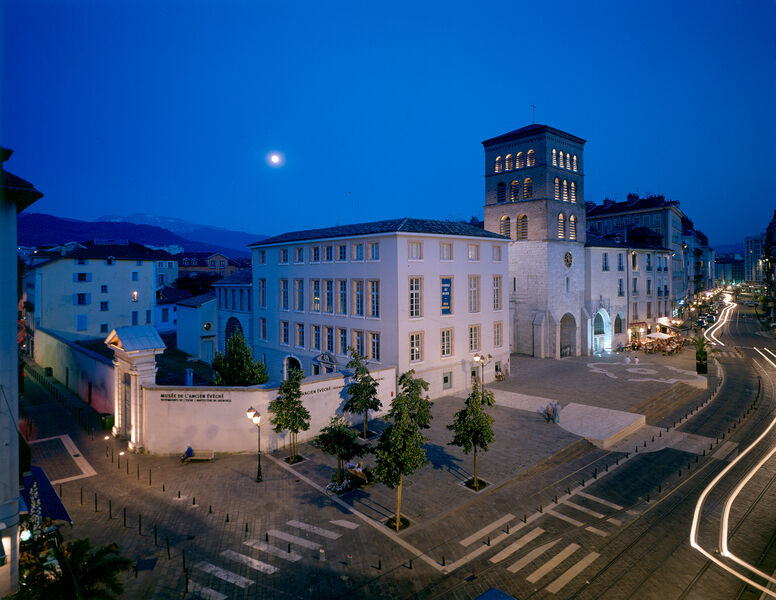
At the heart of Grenoble’s historic district, the museum offers a journey below Notre Dame square, to the vestiges of the city’s fortified ramparts, Grenoble’s first baptistery, and into the old bishop’s palace.Grenoble’s historic district
The bishopric-cathedral complex is a major part of the city’s history and was Grenoble’s original core. When the town was promoted to the official rank of a city in the 3rd century, Grenoble (called Cularo at the time), built a rampart and became the Episcopal seat shortly after. Built in bend in the rampart, the “city of the bishop” revolves around a double cathedral (Notre Dame and Saint Hugues), a baptistery (to the right of the cathedral), and a residency, the bishop’s palace.
The architecture of this ensemble would be modified many times over the course of history. The 13th century builders expanded the palace to the north and rebuilt the Saint Hugues and Notre Dame cathedrals. Marked by the Cardinal Le Camus’ strong personality and audacity, the 17th century gave the bishopric its opening onto the rue Très Cloîtres, a garden, and a courtyard with a monumental entrance way. At the end of the 19th century and during the early 20th century, Notre Dame square was finally entirely reconstructed and the cathedral fitted with a façade of molded cement (the work of Alfred Berruyer). The façade of the Episcopal palace was enlarged to mask that of the Saint Hugues cathedral. With the 1905 law that separated the Church and the State, the bishopric buildings were turned over to civil uses. The Isere Departmental Council acquired the building in 1988, just a short time before a fire would heavily damage a part of the western façade.
A museum for a site
To the visitor who crosses the threshold of the Ancient Bishopric Museum, a visit leading beneath Notre Dame square then into the halls of the ancient bishop’s palace is proposed. While very different, these two parts complement each other and are linked by the reception and gift shop. The order of the visit is coherent, making for fluid transitions between the different parts of the museum.
The visit is designed to offer a harmonious understanding of the ensemble of the site’s vestiges. The visit begins beneath the palace, with the discovery of the Gallo-Roman vestiges that were uncovered by architects. After walking along the city’s ancient ramparts, the visitor crosses the postern, the entrance to the city as of the 3rd century. The visit continues in the Paleo-christian rooms before leading to the baptistery, the highlight of the visit. The site reminds us of the bishop’s role and power, as well as the rituals of Christian baptism.
The visit then continues through the floors of the old Episcopal palace, where the evidence of the building’s complex evolution has been carefully preserved and presented through restoration campaigns.
An audio guide, available in French and English, is accompanies visitors as they move through the site.
A museum for a land and its history
Located on the three floors of the old Episcopal palace, a permanent exhibit offers a journey into the history of mankind and the history of a land, the Isere, from early evidence of human present all the way to the 20th century. The museum acts as a sort of historical epic, the first of its kind in the Isere department, which gives us reference points and mentions the region’s main historical monuments. No other cultural institution had given itself such a mission, to offer such a synthetic view of the department’s history and development.
Other museums are dedicated to specific periods in history, such as the Museum of the French Revolution in Vizille, or to certain themes, like the Isere Resistance and Deportation Museum, or still others to precise areas, like the Matheysin Museum. As for the Dauphinois Museum, it continues to grow through renewed exhibits on various aspects of society.
The visit of the Ancient Bishopric Museum is chronological and takes the visitor through six successive periods: Prehistory, the Gallo-Romain period, the Middle Ages, Modern Times, the 19th century, and the 20th century.Period of opening : All year round
Opening hours on Monday, Tuesday, Thursday and Friday between 9 am and 6 pm. On Wednesday between 1 pm and 6 pm. On Saturday and Sunday between 11 am and 6 pm.
Closed exceptionally on January 1st, May 1st and December 25th.Prices : Free of charge.
Group rate available for > 10 people.
Access : Tram B/Notre Dame Musée-Bus n°32/Notre Dame Musée
A 48 exit Grenoble Bastille

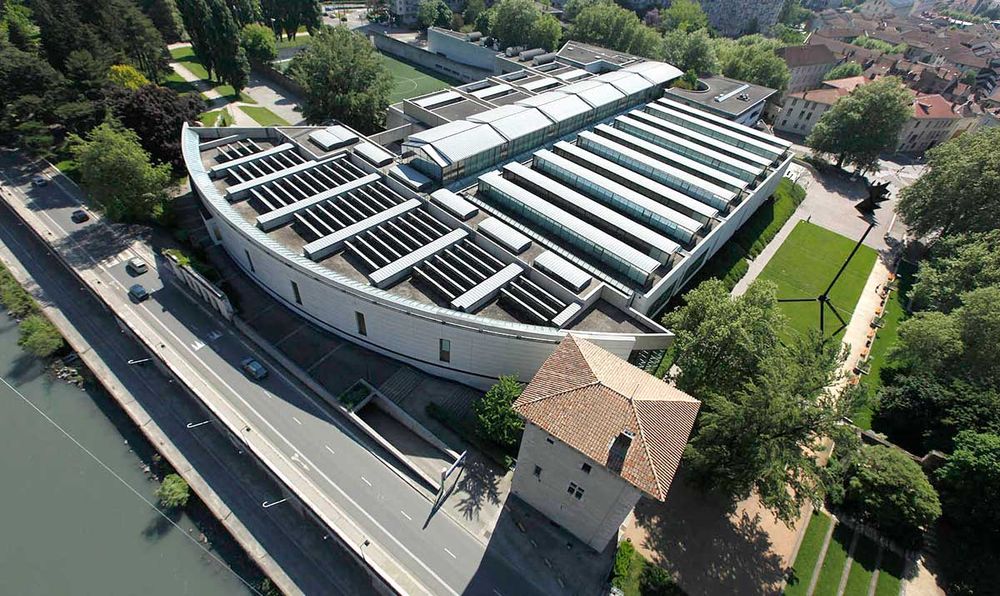
With its collections of ancient, modern and contemporary art, the Musée de Grenoble offers you a chance to traverse the history of western painting from the 13th to the 20th centuries. Included are major masterpieces of classical Flemish, Dutch, Italian and Spanish painting; one of 20th century Europe’s richest collections; and all the great post-1945 contemporary art trends, right up to the most recent artworks of the 2000s.Presented in chronological order, the collections, totalling some 800 painted or sculpted works, are arranged into two distinct large sections. The first is devoted to the great painting schools of the 13th to 19th centuries and to 17th century Europe in particular, with artists such as Rubens, Georges de La Tour, Philippe de Champaigne, La Hyre and Zurbarán, who give the antique art collection its rich splendor.
The 19th century is illustrated by a set of works ranging from Neo-classicism to Impressionism, graced by such great names as Delacroix, Pradier, Fantin-Latour, Monet and Gauguin. The second section presents 20th century art, with key works by the great names in modern art, including Matisse, Picasso, Léger and Ernst, through to the creators of the contemporary period with works by Soulages, Warhol, Nauman, Boltanski and Schütte who, along with many others, have contributed to the museum’s reputation.
This collection is complemented by an extensive collection of drawings, including a number of sheets of great quality. Two of the museum’s rooms are taken up by Egyptian antiquities and Greek and Roman archeology.Period of opening : From 01/01 to 31/12
Opening hours on Monday, Wednesday, Thursday, Friday, Saturday and Sunday between 10 am and 6.30 pm.
Closed on Tuesday.
Closed exceptionally on January 1st, May 1st and December 25th.Prices : Full price: 8 €
Reduced price: 5 €.
Access : Tram B / "Notre-Dame Musée"
Buses 16 and 32 / "Notre-Dame Musée"
Access : A48 exit Grenoble Bastille, A480 exit Grenoble centre

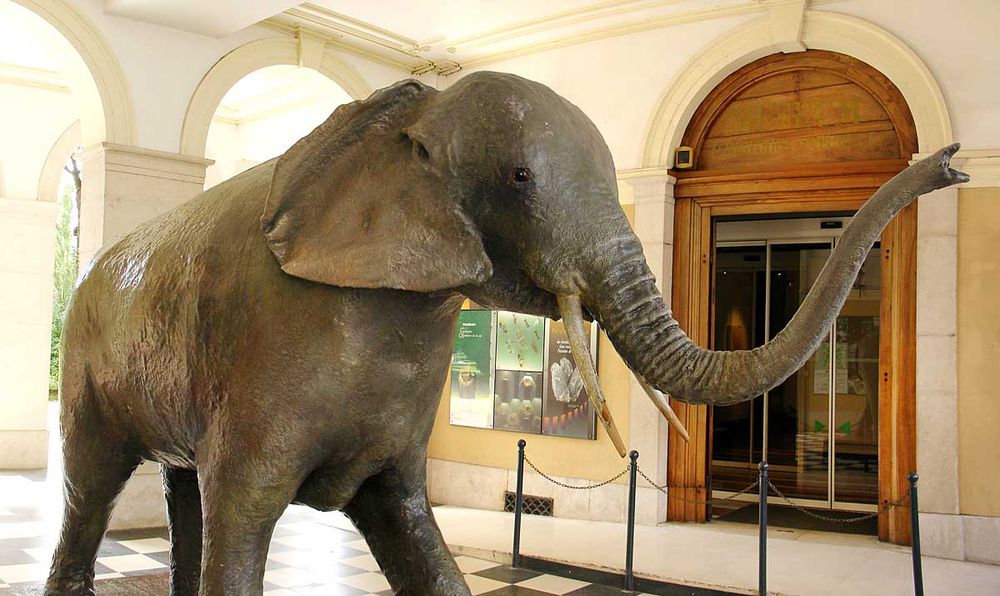
Founded in the XIXth centuruty, in the vegetal shelter of the Jardin des Plantes, the Museum of Grenoble is nowadays a space when you will be able to meet, to be welcomed and to share knowledge on the Sciences of Human, Life and Earth. An experiment to be shared with your family !The Museum collections are evenly used during permanent or temporary exhibitions, and are declined in several animations: workshops, films, lectures, debates...
With 6 available rooms, the Museum of Natural History of Grenoble, is for its visitors, a space of conservation and presentation of the natural inheritance, and a remarkable spot of diffusion of scientific knowledge.
> Room of the Living Mountain:
This room was designed to serve as a genuine meeting place with the natural world and the different animal species, a place to visit before or after an excursion into the actual natural world, to compare one's impressions on-site with the museum's specimens. The room is hardly stagnant, closed to the outside world. It is rather a dynamic exhibit, open to the Alpine world where one can explore the natural diversity from diaporama to diaporama.
>Crystal Symphonie Room :
This 13 faceted cavern presents the visitor with a curious and marvellous invitation into the crystal world. Mineral from some of the world's largest mineralogical sites are presented. Unusual shapes and colors make visitors wonder just how such creations were formed.
> Atlas Room:
"You can see, feel, hear, and turn the pages of the giant book of the planet."
The interactive element of this room seeks to spark children's curiosity.
The various games in front of the display windows create a strong interaction between the youngest visitors, their parents, and the objects presented.
Here, one can see, hear, and touch all at the same time.
Two different environments, along with the mammals that inhabit them, are there to marvel visitors: a temperate forest, and an African savannah.
> Birth of the Alps:
What were the Alps like before? This near permanent exhibit was recently renovated and allows visitors to situate and understand the formation of the Alps in the context of the Earth's long history. From window to window, the visit begins in the Archean era and moves through geological time towards the Quaternary era.
> Alpine mineralogical sites
The Dauphiné mountains most typical specimens and the crystal discoveries from the Alps' most famous mines are presented here.
> In the Earth's own words
The evolution of life as told by exceptional fossils. 101 original pieces, from some of the world's largest fossil sites, are displayed in this new room.
A sober, contemporary museography, thought out for the most diverse audience possible, where the furniture and the use of space suggest the indispensable mapping grid so dear to professional archeologists. The layout highlights the beauty of the objects, the evocative strength of the fossils, still embedded in their gangue.
> The Botanical Garden
A magnificent garden belonging to the Natural History Museum, the garden presents rare trees, 300 m2 of botanical greenhouses, 700m2 of winter gardens, for a total of 20,000 m2.
The first botanical garden of Grenoble was founded in 1782. It was re-established in 1842 on a plot of land purchased by the city, between the rue Haxo and the rue Chanrion.Period of opening : From 01/01 to 31/12
Opening hours on Tuesday, Wednesday, Thursday and Friday between 9.15 am and 12 pm and between 1.30 pm and 6 pm. On Saturday and Sunday between 2 pm and 6 pm.
Closed on Monday.
Closed exceptionally on January 1st, May 1st and December 25th.Prices : Adult: 5 €.

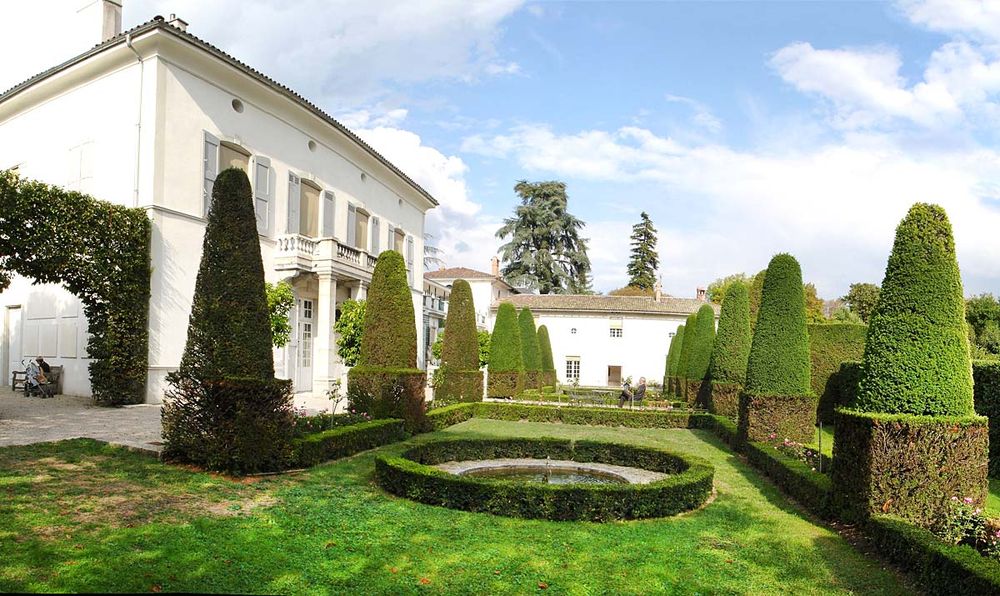
The renovated property of painter Ernest Hébert invites visitors to step into the artist's 19th century world and to discover his work through the presentation of his collections and of 17th century frescoes.The Hébert museum of La Tronche is a somewhat unusual museum: sheltered behind walls, this two and a half hectare estate has protected itself from the wears of time. The artist's house has held onto the spirit of the place and the intimate character of a family house. The garden, sometimes hidden in the shadows, still holds onto the artist's memories of Italy. The museum, as soon as it opened in 1979, set a double mission for itself: encourage a better knowledge of 19th century art through the artist's collection and to promote contemporary artists, both aspiring and confirmed.
The permanent exhibit halls take the visitor on a journey through Ernest Hébert's long artistic career via his works and those of his friends. They illustrate the academics, whose complexity and importance we are rediscovering today and which sheds light on official art. Between the romanticism of Eugene Delacroix and the symbolism of Gustave Moreau, Hébert paves the way for a deeper understanding of 19th century aesthetic movements.
The painter
Ernest Hébert (1817-1908), after having studied at l'Ecole des Beaux Arts de Paris and winning the Grand Prix of Rome for historic painting, became famous with "La Malaria" which he presented at the 1850 Salon. A flourishing career was set before him and he shared his time between France and Italy, where he served twice as director of the Academy of France in Rome (1867-1873 and 1885-1890). He very soon became a sought-after portraitist for high Parisian society during the Second Empire and Third Republic, where he frequented upper class salons. Hébert keenly expressed the poetry and secrecy of his feminine models, but it was in Italy that he found the most inspiration, preferring to depict rural scenes imprinted with a melancholic realism. He was responsible for the mosaic on the apse of the Pantheon, inaugurated in 1884.
The museum
Through a chronological and thematic layout, the museum presents Hébert's work plus the paintings and sculptures of his friends and students. His years of study, his life at the Villa Medicis, his stays in Italy, the two terms he spent as a director, and his Parisian career are presented.
The recreated studio has been restored to its original function.
The numerous drawings included in the collection are presented in rotation, in the drawing room, set up in one of the house's bedrooms (2nd floor).
The house
The house recreates the atmosphere that the artist knew with its period furniture and souvenirs, including the restored Laetitia Bonaparte salon. The impressive 17th century frescoes, uncovered during renovation work, depict the ancient history of the house. Numerous testimonies from Hébert's mentors—David d'Angers, Delaroche, his friends from the Académie de France in Rome, Gounod, Regnault,--and his patrons—Théophile Gautier or Princess Mathilde—evoke his career as well as illustrating the artististic wealth of the prolific 19th century.
The gardens
Set aside from urban life, the museum's park, with its shaded alleyways, rippling brooks, and trellises, has held onto the charm of the artist's "secret garden."
In 2004, it was recognized as a "Remarkable Garden," an award recently created by the Ministry of Culture and Communication. This label recognizes the garden's quality and charm, whose richness stems as much from its 17th and 18th century origins as from the modifications made by Ernest Hébert and his wife Gabrielle. The juxtaposition of well groomed, Italian style areas with English garden-type landscapes, the antique elements, and the numerous water basins are reminiscent of the Villa Medicis in Rome and make for an original setting, open freely to the public.Period of opening : From 01/01 to 31/12 between 10 am and 6 pm.
Closed on Tuesday.
Closed exceptionally on January 1st, May 1st and December 25th.Prices : Free of charge.
Group rate available for > 3 people.


The Museum of Industrial Innovation tells more than just the history of a family company which has grown into a multinational enterprise. Very innovating, it offers you an experimental, playful and peculiar course which recounts the remarkable times of French Industry.The A. Raymond company (Raymond-Bouton for long time Grenoble natives) has become an international group, and number one in certain bindings markets, notably in the automobile industry.
The time was that of prosperity, and while many workshops on the cours Berriat were moving out to new locations, the directors chose to create a company museum.
Heritage technicians, accustomed to preservation requests after a company has closed, saluted the effort to bring history to life while the company was continuing to prosper!
On the site where the company was founded 140 years ago by the first A. Raymon (Albert-Pierre) when the cours Berriat was rhythmed by factory life, the new museum offers an original scenography, which involves all the senses and focuses on the history of the family company, still under control of A. Raymond (today Antoine, who succeeded Alain). Part of the presentation is dedicated to industrial innovations that led the group to impose itself as the dominant player in its field, as well as to recent products.Period of opening : From 01/09 to 30/06, 1st Wednesday and 3rd Wednesday of the month.
Closed exceptionally on January 1st, May 1st and December 25th.
Access : Tramway A stop Berriat Magasin


Located in a 17th century convent building, this Alpine museum presents varied exhibits on regional heritage from the past and present, including The People of the Alp (a presentation of 19th century rural mountain life) and the Grand History of Skiing.The museum was created in 1906 thanks to the initiative of its first curator Hippolyte Müller, who sought to "link the first inhabitants of the region to those who still live here today." The Dauphinois museum is located in what was once the Sainte Marie d'en Haut convent. Classified as a historical monument, the complex was founded at the beginning of the 17th century by saint Francis de Sales and saint Jeanne de Chantal. After an eventful history, which saw the building used as a prison, religious boarding school, barracks, and immigrant housing, the building was restored for the 1968 winter Olympics in Grenoble. The Dauphinois museum, in its current location, was inaugurated that same year by André Malraux.
As a genuine regional museum of mankind, the Dauphinois museum looks at all the aspects of life and history in the old Dauphiné province, and on a wider scale, in the French Alps. Archeology, pre-history and history, ethnology, industrial heritage, and regional decorative arts are just some of the fields that this museum deals with.
Other than The People of the Alp and The Grand History of Skiing, the Dauphinois Museum does not house a permanent exhibit. Instead, it renews its offer every six to twelve months, with exhibits on regional heritage, the Dauphiné, the Alps, but also on foreign cultures.
A social museum, the Dauphinois museum believes that heritage and history worth our attention simply because they allow us to answer questions about today's society, to understand the movements of our time, and to express the wealth and diversity of various cultures over space and over time.Period of opening : From 01/01 to 31/12
Opening hours on Monday, Wednesday, Thursday and Friday between 10 am and 6 pm. On Saturday and Sunday between 10 am and 7 pm.
Closed on Tuesday.
Closed exceptionally on January 1st, May 1st and December 25th.Prices : Free of charge.
Access : Buses on Victor Hugo square / Le Rabot number 40.

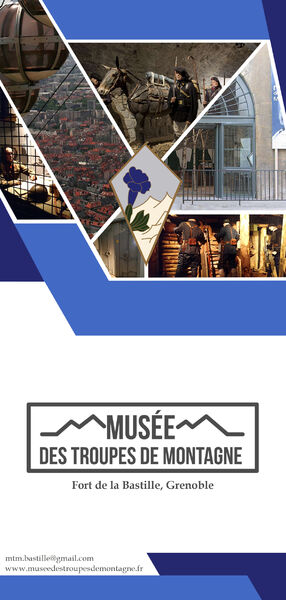
Inaugurated in October 2009, Mountain Troops Museum of Grenoble takes an ethnological, anthropological, and sociological look at the life of mountain troops. All of the presented themes place man, as the mountain soldier, in his environment.Six thematic areas are presented: History of the Mountain Troops, Conquering and Surviving in the Mountains, Combat, Living in the Mountains and with the Local Population, Culture and Identity, and Alongside the Mountain Troops. Other themes are presented through temporary exhibits. They focus on the relationship between the military and civilian communities.
The Museum:
As part of the historic Bastille site, Isere's number one tourist attraction, the Mountain Troops Museum, targets a wide public and families in particular.
In a privileged setting, at the heart of an old fortress, the museum offers visitors an experience unique in France, which associates man and the mountain.
It is on this alliance that the Mountain Troops are based. A visit to the museum comes as a good complement to that of the Bastille site.
Overlooked by the Memorial to the Soldiers of the Mountain 200 metres above, this museum also reminds us that the history of the Bastille and of Grenoble itself is inextricably linked to that of the Mountain Troops.
The visit
Through its rich collection and innovative layout, the museum offers an attractive visit presenting the history of the Mountain Troops from its foundation to today.
Thanks to the audio guide, a multilingual voice will recount the story of this Alpine adventure.
The information is presented through a resolutely modern format, unlike that of most traditional military museums, and includes many exceptional objects.
A spectacular and realistic scenography totally immerses the visitor in the epic of the mountain soldiers through life size recreations of poignant scenes of military life, such as a World War I trench or a room from the Maginot Line.Period of opening : From 01/04 to 31/05
Opening hours on Tuesday, Wednesday, Thursday, Friday, Saturday and Sunday between 9 am and 7 pm.
Closed on Monday.
From 01/06 to 31/08
Opening hours on Tuesday, Wednesday, Thursday, Friday and Sunday between 9 am and 7 pm. On Saturday between 9 am and 10 pm.
Closed on Monday.
From 01/09 to 30/09
Opening hours on Tuesday, Wednesday, Thursday, Friday, Saturday and Sunday between 9 am and 7 pm.
Closed on Monday.
From 01/10 to 31/10
Opening hours on Tuesday between 11 am and 7 pm. On Wednesday, Thursday, Friday, Saturday and Sunday between 9 am and 7 pm.
Closed on Monday.
From 01/11 to 31/03
Opening hours on Tuesday, Wednesday, Thursday, Friday, Saturday and Sunday between 11 am and 6 pm.
Closed on Monday.Prices : Adult: 1.50 to 3 €.
Access : Access by the cable car of La Bastille

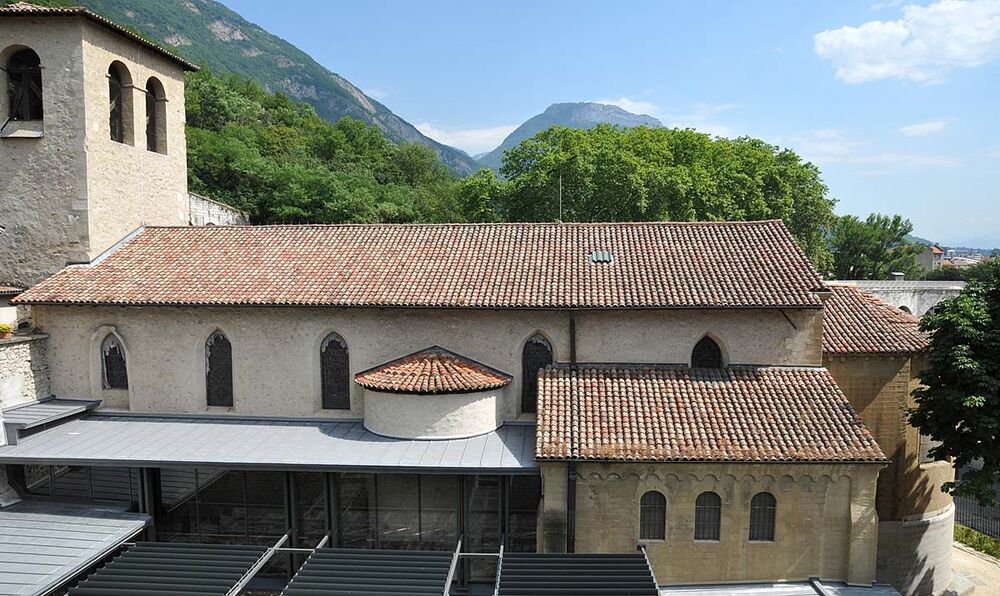
A rarity in Europe, this museum was installed in an old parish church. The structure was among the first to be classified as a Historic Monument of France. Its Merovingian-era crypt is a unique witness to the art and architecture of the very early Middle Ages.After much archeological research, the Saint Laurent archeological museum and church is getting a face lift in order to better welcome visitors. The works,is now finished with the construction of a visitor's path and the bringing of the site up to modern standards began in February 2009.
The site has earned a solid reputation, thanks in part to its sanctuary dating from the early Christian era (6th century) and its exceptional crypt. The renovation project strives to better exploit the site's historical and archeological wealth, which is classified as a Historic Monument of France.
1500 years of religious and funerary history have been uncovered. We can see the different construction phases: antique mausoleums, the Roman-style church and its Benedictine capitals, the Merovingian funeral basilica, and Carolingian church.
Where the cloister once stood, the relics uncovered by archeologists are protected by a glass and metal structure.
A collection of objects uncovered during the dig enriches the permanent exhibit, which for the first time, reveals the essential findings of 30 years of on-site research. This exhibit presents the key information concerning the urban, religious, and human history of Grenoble.Period of opening : From 01/01 to 31/12 between 10 am and 6 pm.
Closed on Tuesday.
Closed exceptionally on January 1st, May 1st and December 25th.Prices : Free of charge.

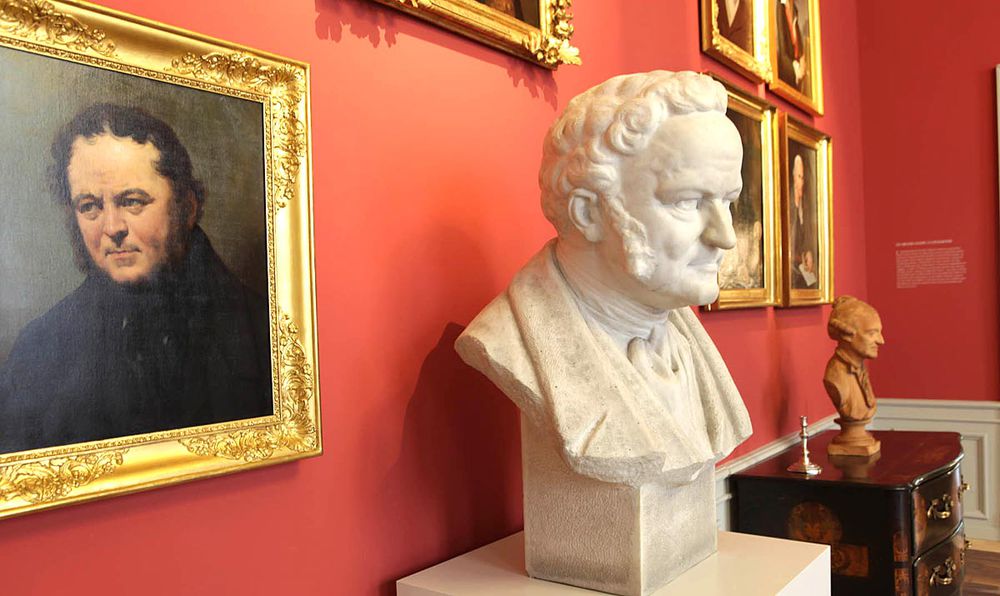
This museum mobilizes in network the apartment Gagnon, the commemorative site, the native apartment of Stendhal, living place dedicated to the contemporary literature, the collections of the library, and a historic old city town.Inaugurated on September the 14th 2012, Stendhal Museum is a project which goes beyond the simple restoration of an heritage of furniture. Its mission is to make the public sensitive to the literary work of Stendhal.
This museum, belonging to the Municipal library of Grenoble, gathers :
> Gagnon's apartment, a museographic space and a place of memory
> Stendhal's natal apartment, the living place dedicated to contemporary literature
> Study and Information Library's collections
> A historic itinerary in the ancient centre
GAGNON'S APARTMENT
Docteur Gagnon's apartment, Stendhal's grandfather, located in the ancient center of the city, is the founding element of Stendhal museum. It was there that Stendhal was used to findind shelter from his aunt Séraphie and from his father, Chérubin Beyle, and that he grew up next to his grandfather.
THE NATAL APARTMENT
Painstakingly depicted by Stendhal himself in Vie de Henry Brulard, this apartment, typical of the type of accomodation which was that of the XVIIIth century bourgeois of Grenoble, used to belong to Stendhal's father's family since several generations. To the young Henri, this place was the synonym of happiness until his mother Henriette passed away, in 1790 : he was only 7 at that time.
Then, it became mostly a place of studies, where the young Henri suffered from the authority of his preceptor, the dull and stern abbot Raillane. It was in the drawing-room which overlooked the rue des Vieux-Jésuites that Stendhal, as a teenager, wrote Selmours, his first literary essay.
THE MUNICIPAL LIBRARY'S COLLECTION "MUSEE STENDHAL"
Founded in 1861 and gradually enriched, the Stendhal fund, considered as the most important of the world, consists in three parts:
> 1000 printed copied, all in their original editions, numerous foreign edition as well as studies, thesis and bibliographies on the writer
> 1 151 iconographic pieces of work
> 40 000 manuscript pages (of Lamiel, Souvenirs d'égotisme, Nouvelles etc, ...).
The STENDHALIAN ITINERARIES
Organised by the Office of Tourism, the historical Stendhal itinerary offers the visitors to discover houses or places which are intimately linked to Stendhal's life, signposted by patrimonial plates.Period of opening : From 01/01 to 31/12
Opening hours on Saturday between 10 am and 12 pm and between 2 pm and 6 pm.
Closed exceptionally on January 1st, Easter Monday, Feast of the Ascension, Whit Monday, May 1st, May 8th, July 14th, August 15th, November 1st, November 11th and December 25th.Prices : Full price: 5 €
Child: 0 €
Set price group children: 20 €.





